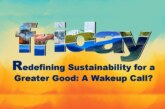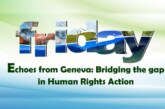
Dr. Arvind Kumar*
When the Second World Summit for Social Development convenes in Doha, Qatar (4–6 November 2025), the world will gather not merely for commemoration, but for collective reckoning. Three decades after the original 1995 Copenhagen Summit, WSSD2 emerges as more than a milestone; it stands as a critical inflection point in humanity’s ongoing struggle for social justice. In an era of widening inequality, climate disruption, digital upheaval, and fractured geopolitics, the summit confronts a fundamental question: can the world renew its faith in social progress, or will the promises of international cooperation dissolve under mounting pressures?
The initiative for WSSD2 emerged from UN Secretary-General António Guterres, who had advocated for such a gathering in his 2021 Our Common Agenda report. Against this backdrop, WSSD2 seeks to “address the gaps and recommit to the Copenhagen Declaration on Social Development and the Programme of Action and its implementation and give momentum towards the implementation of the 2030 Agenda”.
WSSD2 convenes against a backdrop that echoes the political tensions of 1995, yet with contemporary complexities that make the challenge even more formidable. Today, radical market and reactionary policy prescriptions are resurging globally, with social rights and goals of social justice under renewed attack. The summit’s urgency becomes clear when examining current global conditions. The World Social Report 2025 reveals that despite unprecedented gains in material well-being over three decades, more than a third of the world’s population lives on between $2.15 and $6.85 per day and remains economically insecure. It also introduces a crucial new dimension to social development thinking: the integration of social protection with climate action and just transition. For instance, 20 countries most vulnerable to the climate crisis, 91.3 percent of people (364 million) still lack any form of social protection. In the 50 most climate-vulnerable countries, 75 percent of the population (2.1 billion people) lack social protection coverage.
A Summit against the Current
Based on the World Bank’s updated poverty estimates from June 2025, which raised the international poverty line from $2.15 to $3.00 (2021 PPP), approximately 808 million people will be living in extreme poverty in 2025. This represents 9.9 percent of the world’s population, or roughly 1/10 people. While 1.5 billion people escaped poverty between 1990 and 2022, the upward revision of extreme poverty figures underscores that eradicating extreme poverty by 2030 appears highly unlikely. The core themes of the 1995 summit combating poverty, creating productive employment, and promoting social integration feature prominently in the 2030 Agenda and its Sustainable Development Goals. Yet current progress tells a sobering story: the 2025 SDG Progress Report shows only 17 percent of targets on track, nearly half with moderate or minimal progress, and over a third stalling or regressing, representing a dramatic shortfall from the ambitions articulated in Copenhagen and in the 2030 Agenda.
One area of substantial progress is social protection coverage. For the first time in history, more than half of the global population (52.4 percent) is covered by at least one social protection benefit, up from 42.8 percent in 2015, marking genuine advancement toward SDG 1.3. However, 3.8 billion people still live without any social protection. The ILO calculates that at the current rate, universal coverage would take another 49 years, until 2073. Regional disparities remain acute: high-income countries approach 85.9 percent coverage, while low-income countries remain at just 9.7 percent. The funding gap is massive, with low- and middle-income countries needing an additional $1.4 trillion annually (3.3 percent of aggregate GDP) to guarantee minimum social security levels, highlighting the scale of investment required to achieve equitable social protection worldwide.
India’s Quest for Equitable Social Security
India’s social protection journey offers both inspiration and caution for WSSD2. Coverage expanded dramatically from 19 percent in 2015 to 64.3 percent in 2025, showing that rapid, large-scale social protection is achievable even in complex federal systems. Initiatives like the national Social Protection Data Pooling Exercise, conducted with ILO collaboration, highlight how transparent, credible systems can gain international recognition.
Yet challenges remain. India ranks 99th out of 167 countries in the 2025 Sustainable Development Report, reflecting gaps despite progress in health, education, poverty, and inequality, while environmental, energy, and climate goals lag. Internal disparities, quality concerns, fiscal sustainability, intergovernmental coordination, and alignment with climate policy underscore the need to shift “from expansion to consolidation, from coverage to justice, from slogans to systems” to sustain and deepen social protection.
In recent developments, the Indian government has mandated Aadhaar authentication for all new centrally sponsored schemes involving direct benefit transfers (DBT), aiming to enhance transparency and accountability in the distribution of government benefits. Additionally, Prime Minister Narendra Modi emphasized India’s commitment to promoting ethical and inclusive technology, highlighting that the country has integrated democratic values into its governance as well as its technological ecosystems. Modi underscored that India has become one of the most digitally inclusive societies, thanks to efforts to extend digital access across all layers of society. These initiatives reflect India’s ongoing efforts to strengthen its social protection systems and ensure that technological advancements contribute to greater inclusivity and equity.
WSSD2 presents a critical opportunity to redefine global social development through bold, actionable commitments. The summit’s way forward lies in translating the concept of a “New Social Contract” into concrete policies that integrate poverty eradication, decent and climate-friendly employment, universal social protection, equality, and inclusion. Experiences from India and other national contexts demonstrate that rapid expansion is possible, but sustainable transformation requires moving from coverage to justice, from slogans to systems, and from incremental reforms to integrated, people-centered approaches. Embedding SDGs in immediate action pathways, anchoring social protection within climate resilience strategies, and addressing financing and equity gaps particularly the persistent North–South financing inequities are essential to ensure that aspirations do not remain aspirational. In an era marked by trade wars, protectionism, and geo-economic competition, the Summit must reaffirm multilateralism, reinforcing institutional legitimacy and shared accountability. At the same time, the digital revolution offers unprecedented opportunities to expand inclusion, but only if technology and AI are harnessed for justice rather than exclusion; robust safeguards around data rights, algorithmic fairness, and digital literacy must be core pillars. Mechanisms such as the proposed Global Fund for Social Protection and structured five-year reviews can provide predictable, solidarity-based support for low-income countries, while vibrant civil society advocacy will maintain pressure, accountability, and the ethical grounding necessary for truly equitable social progress.
The summit’s success will ultimately be measured not by declarations, but by tangible outcomes in the lives of the world’s most vulnerable. Doha must catalyze a shift toward a globally shared social contract linking rights, duties, finance, innovation, and solidarity. By committing to follow-through on universal protection floors, inclusive digital policies, and institutional accountability, WSSD2 can transform a moment of possibility into sustained progress. In a world where extreme poverty persists, social protection gaps remain vast, and only 17 percent of SDG targets are on track, the summit offers a rare chance to turn rhetoric into measurable change. The legacy of WSSD2 will be defined by renewed hope, concrete action, and meaningful improvements in communities worldwide an era where social justice is not aspirational, but lived.
*Editor, Focus Global Reporter






